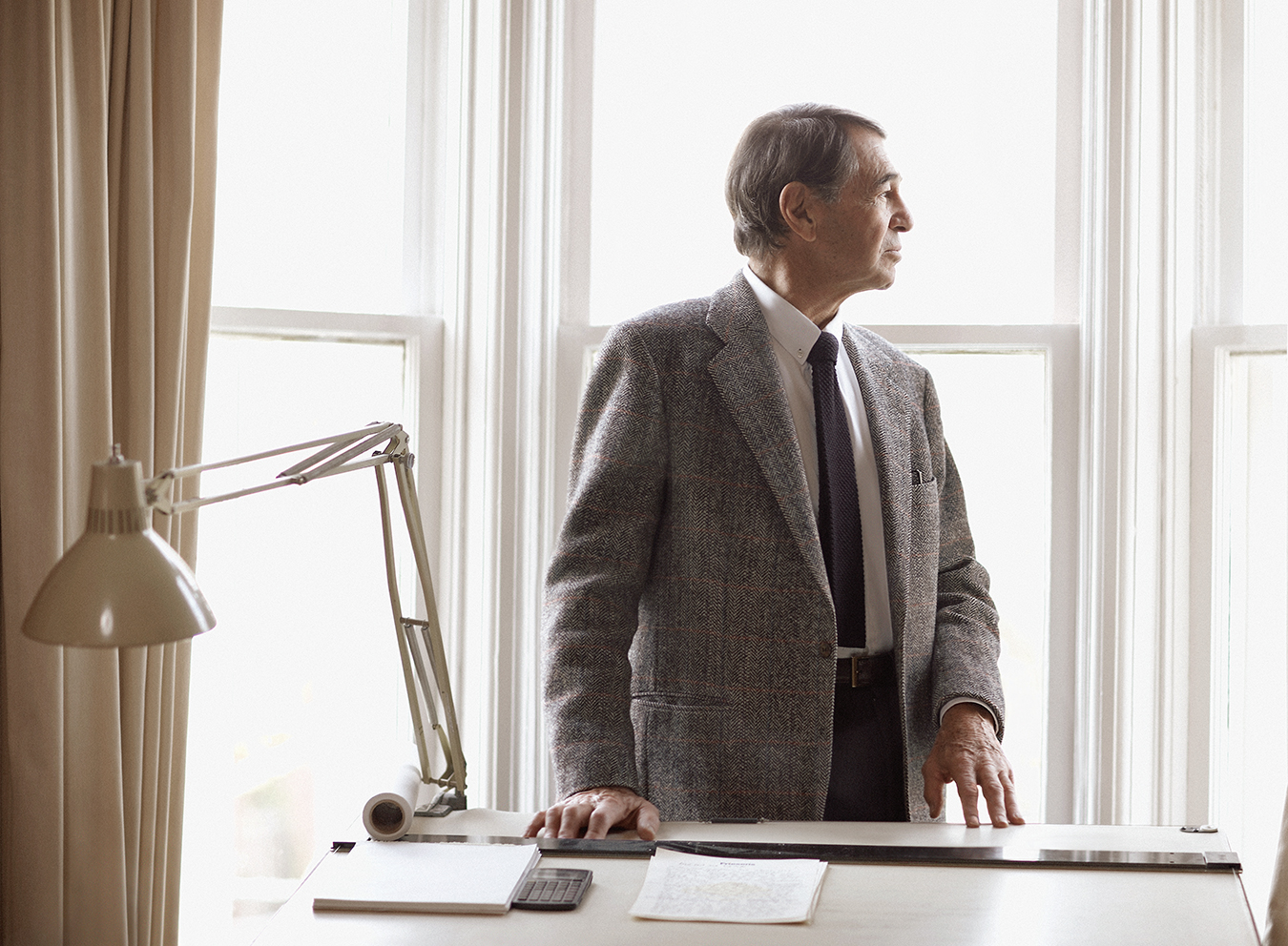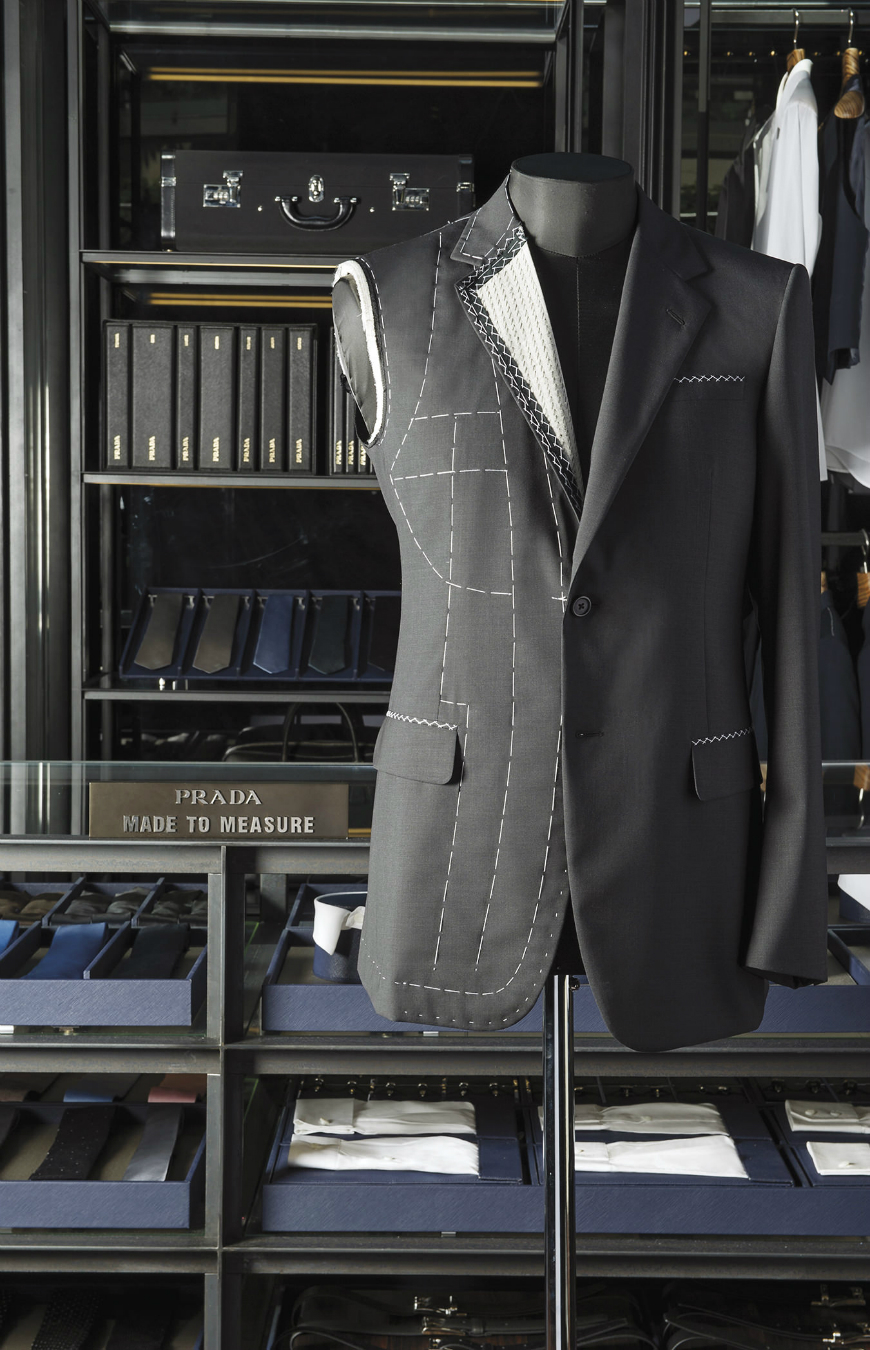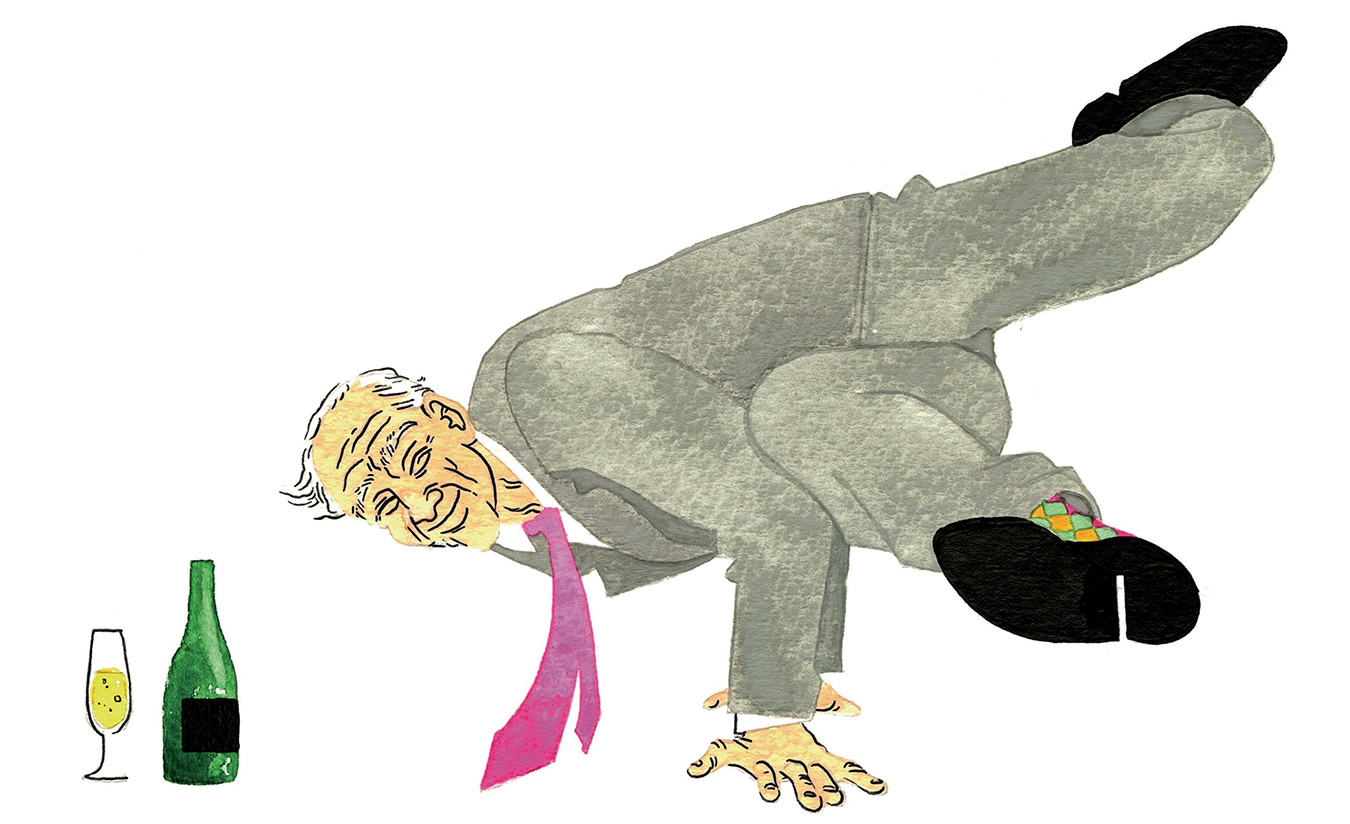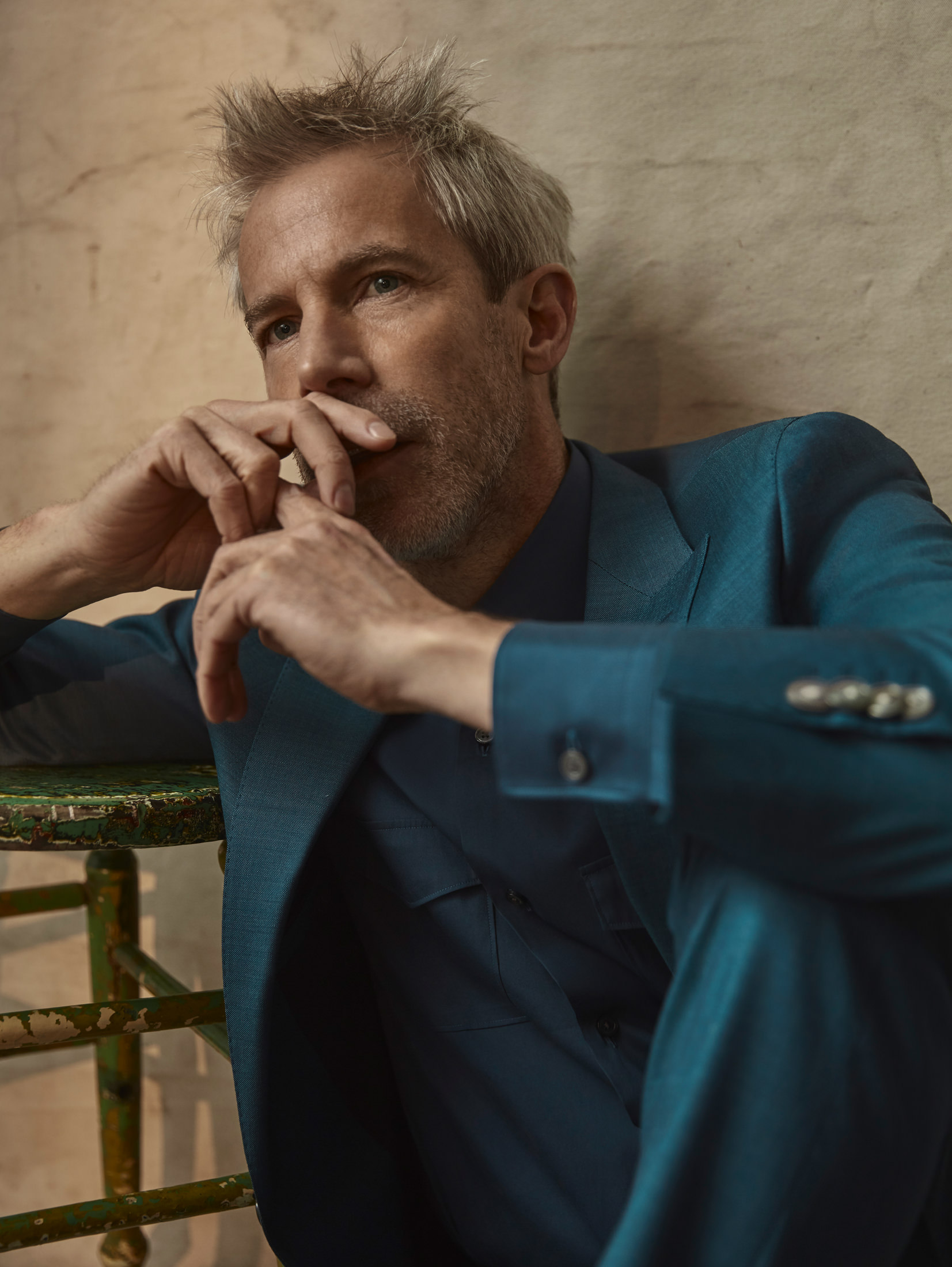Greta Hodgkinson
Class act.
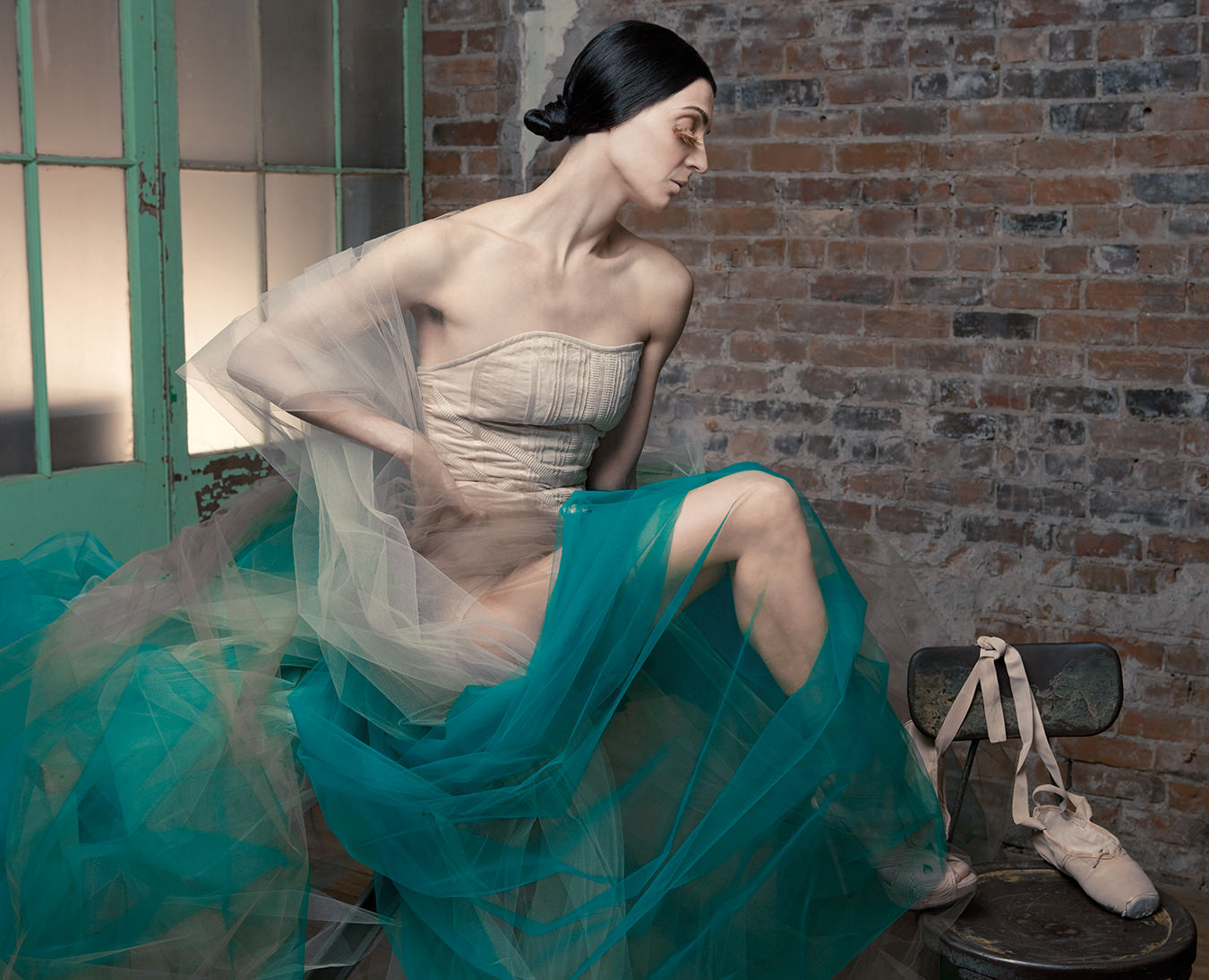
ACT ONE—Onegin (In Quest of an Ideal.)
The curtain rises on Greta Hodgkinson, principal dancer with the National Ballet of Canada. It’s the ballerina’s 20th season with the Toronto-based company, and there she is, lying on her stomach onstage at the Four Seasons Centre for the Performing Arts, long brown hair braided as tightly as the ribbons on her pink satin pointe shoes, nose in a book.
She is not relaxing.
As Tatiana, the female lead in John Cranko’s Onegin, the 1965 full-length story ballet based on Eugene Onegin, Alexander Pushkin’s celebrated 19th-century prose poem, Hodgkinson is focusing every ounce of her being on playing a role she claims to be among the most challenging she has ever performed. The role represents ballet as character study and is void of pyrotechnics, the flashy virtuoso dancing for which Hodgkinson—she of the iron-clad technique—is known.
“It’s such a huge journey,” says the 37-year-old dancer of the more nuanced acting skills required to play Pushkin’s soulful heroine. The three acts run the gamut of female experience, from youthful innocence to womanly maturity, all while Tatiana nurses a broken heart. “You go through so much from the beginning of the ballet right through to the end. As I’ve danced it over the years, I’ve come to understand it better. I know now that it’s not a character I’m dancing—it’s all the experiences I’ve had in my own life that I bring into play. I can’t say enough about that role. To me, it’s perfect in so many ways.”
Doing the role justice, she explains, lies in learning how to let go of the technique and allow the music—in this case, Tchaikovsky at his mellifluous, dramatic best—to fuel the emotional energy propelling the choreography through its series of inventive solos, pas de deux, pas de trios, and glittering ensemble pieces.
“Now when I play a role like Tatiana, it’s a much more stripped down process than when I first danced it years ago,” says Hodgkinson, her saucer-like eyes as bright and open as her dancing style. “I get rid of all the excess, and trust that it’s all there in the choreography. I don’t need to embellish it. I don’t need to add my fluff. If I have a thought, I am confident that the audience will read it. I’m playing it simply. I’m just being me.”
Being true to herself in an art form that values conformity is what has enabled Hodgkinson to stand out from the tutu-clad pack. She is a ballerina who dances to her own beat, a maverick with a killer work ethic and a heart of gold.
“I’ve always loved dancing with Greta,” says Guillaume Côté, the company’s guest artist in residence, who danced opposite her in Onegin in March. “She’s incredibly demanding with herself and her partners, but she manages to keep the greatest sense of humour. What the audience may not know is that there is a true comedian trapped into this dramatic ballerina, and she has me laughing so hard in rehearsal almost every day.”
Adds fellow principal dancer Aleksandar Antonijevic, one of her frequent dance partners, “Greta is fearless. She always goes for it and is incredibly disciplined.” It’s a fitting tribute to pay a dancer for whom the stage has long been her raison d’être.
“For me, it’s all about the live performance,” says Hodgkinson, who, in 1985, at age 11, first left her home in Providence, Rhode Island, to live in residence at Canada’s National Ballet School in Toronto as a full-time dance student (she now has dual American-Canadian citizenship). She chose dance over figure skating and gymnastics, both of which she excelled at; she just knew it was ballet that she was meant to do, she says.
And do well, because soon after joining the National Ballet in 1990, Hodgkinson quickly rose through the ranks, becoming a second soloist in 1993, a first soloist in 1995, and principal dancer in 1996, the company’s highest performance standard. During her years with the company, she has danced virtually every role in the repertoire, which includes 19th-century ballets like The Sleeping Beauty and contemporary works like Canadian choreographer James Kudelka’s 1997 abstract ballet, The Four Seasons. Kudelka created the sensuous summer section, featuring solos and pas de deux (performed also by Rex Harrington), expressly for Hodgkinson, whom he considered a muse. Her lean, lithe, kinetically expressive body also inspired the former National Ballet artistic director to create for her prominent roles in his 2005 comedic full-length narrative ballet, An Italian Straw Hat, and his 1999 reworking of Swan Lake, in which Hodgkinson danced the dual female lead, Odette/Odile. “I love dance,” says Hodgkinson. “It’s how I express myself. I love playing a character. I love telling a story. All those things completely outweigh how difficult a life it is.”
And difficult it is, since it involves up to eight hours of training daily in the studio, smiling through the pain in front of an audience, plunging her feet in a bucket of water once the show is over to be able to hobble home to bed only to wake up the next morning and do it all over again.
But Hodgkinson’s not complaining.
“It’s about the pursuit of perfection,” she says, contemplatively, speaking as you imagine Tatiana might after emerging from the depths of one of her books. “It’s an impossible goal, but it’s why we go in the studio every day. We’re trying to perfect the smallest of details. That’s what dance is about.”
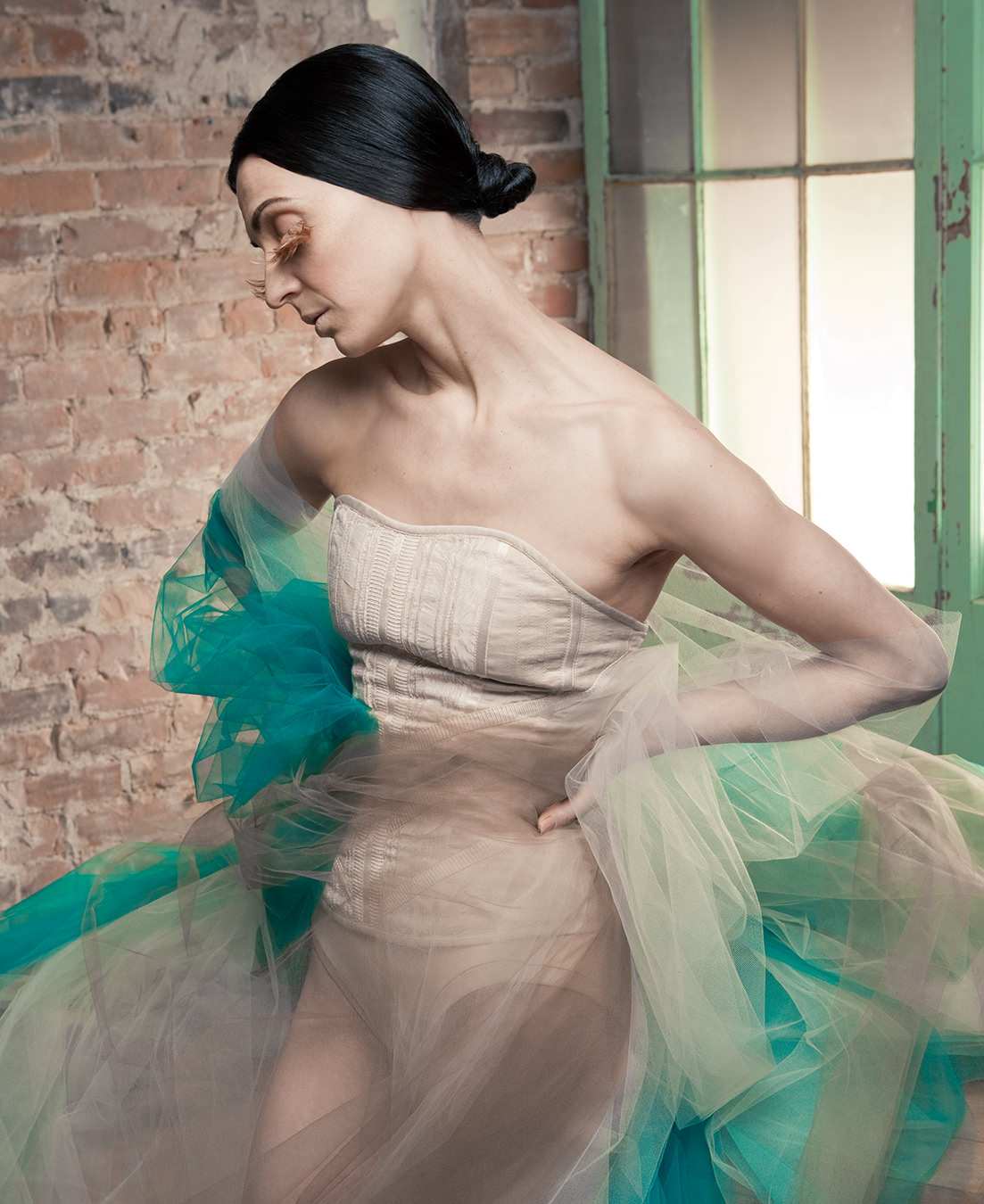
Hodgkinson wears her own leotard.
ACT TWO—Other Dances (Other Lives.)
Onegin isn’t the only performance the National Ballet is bestowing on Hodgkinson in honour of her 20th season. As part of the June program, the company has secured for her the rights to perform Other Dances by Jerome Robbins, the late American choreographer better known as one of the creators of West Side Story.Hodgkinson is scheduled to perform the rarely seen 20-minute pas de deux ballet with fellow company dancer Zdenek Konvalina. Hodgkinson requested the work after admiring it for many years from afar. Robbins created Other Dances in 1976, for Mikhail Baryshnikov and Natalia Makarova, the celebrated Russian dancers who defected to the West from the former Soviet Union in the 1970s to have the artistic freedom to perform new works by contemporary choreographers. The ballet pays tribute to its original performers, and combines Slavic folk dancing traditions like mazurkas with modern dance idioms. The arm work for the female dancer is especially stylized, the result of Robbins having been besotted with Makarova’s exquisite port de bras. Set to a Chopin piano concerto performed live on stage, the ballet, observes Hodgkinson, is notoriously difficult. It takes a brave dancer to want to perform it.
Hodgkinson’s that dancer.
“It’s a work I’ve been waiting to dance for many years,” she says, excitement mounting in her voice. “It feels very exclusive. It hasn’t been danced by everybody. It’s got this Slavic character to it, but it’s also extremely elegant and musical. It’s a very demanding work—but something I thought would be a perfect work for me to do. I’m just so grateful to [company artistic director] Karen [Kain] for bringing this piece in for me. It’s very special. It’s not a work you get to see every day.”
She won’t perform it once, gala-style, but will dance it each night of the five-evening run of the National Ballet’s mixed program in June, with additional matinees on Saturday and Sunday. Along with Other Dances, Hodgkinson will also be one of the female leads in Christopher Wheeldon’s new production of Alice’s Adventures in Wonderland, a new full-length ballet (also making its Canadian debut in June) that the company has had only a handful of days to learn. It’s exhausting just listening to her talk about it all. You wonder how she keeps up with all the demands.
The answer, in a word, is motherhood. Since giving birth to an eight-pound son at Toronto’s Mount Sinai Hospital last Christmas Eve—an experience that Hodgkinson, who is married to company first soloist Etienne Lavigne, laughingly describes as being more painful by far than dancing for hours on her toes in hard pointe shoes—she has had to become an expert in time management in order to balance the demands of diapers on top of a full-time dancing schedule.
“It enriches you in a way,” she says of her new all-important role of a mom. “I can’t say myself if I’ve changed as a result of it, but I find it interesting when I hear people say that since coming back I’ve deepened. They say they see it in how I’m now dancing.”
And her performances are better, if such a word could be applied to a dancer of whom Kain has said, “has always attempted to raise the bar higher.” Hodgkinson’s dancing today isn’t just solid, it’s suffused with passion and a thrilling sense of abandon, a result of her trusting herself more in making the right creative choices while on stage.
“I am both an artist and a mother—it’s not one or the other for me,” she continues. “I think that both enrich and complement each other and play important roles in my life.” While pregnant, Hodgkinson took company class well into her seventh month. In the weeks preceding the birth, she started teaching her fellow dancers as a way of staying connected to her art.
“It was nice to be on the other side of it all, imparting to the others a little bit of what I know,” she says. “It gave me a different perspective on what I do for a living. So often with dance, the focus is internal—you’re concentrating on what you need to do to be able to perform. But when teaching, the focus is more on giving themwhat they need as artists. It was a different mindset, and I found that it infused my own understanding of the steps in a new way.”
That’s not to say that Hodgkinson is contemplating teaching as a second career. She rejects the idea, saying, “I’m not retiring, I’m not ready to hang up my dancing shoes just yet.”
Indeed, live performance continues to colour her future as much as it has shaped her past. After the June programs of Other Dances and Alice’s Adventures in Wonderland, a feature of Toronto’s Luminato arts festival, Hodgkinson is scheduled to dance The Dying Swan, the poignant solo en blanc originally created for the great Anna Pavlova in 1905 by Mikhail Fokine, set to a cello solo by Camille Saint-Saëns. Hodgkinson will perform the iconic ballet one time only at Mad Hot Wonderland, a gala company fundraiser to be held in Toronto on June 21. After a short summer break, she will be back in the studio to begin rehearsals for the National Ballet’s new full-length production of Romeo and Juliet by contemporary Russian choreographer Alexei Ratmansky, which is scheduled to open the company’s 60th anniversary season in November.
“I feel that I am in the best part of my career right now,” says Hodgkinson. “And with each performance, I will still continue to develop as an artist.”
APPLAUSE.
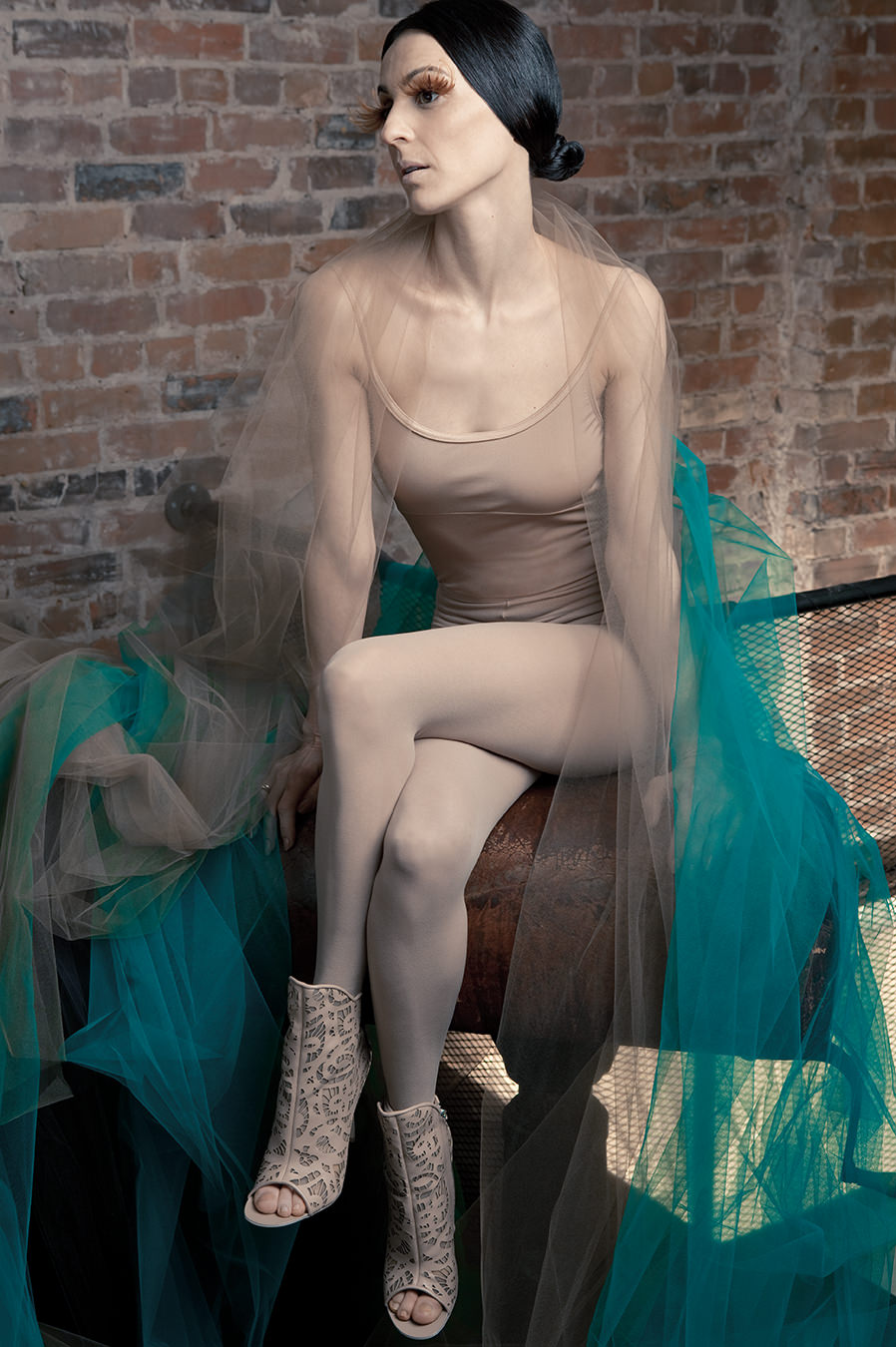
Hodgkinson wears her own leotard, and Giuseppe Zanotti shoes.
Prop stylist: Suzanne Campos for Plutino Group. Assistant stylist: Terri Dacquisto for Plutino Group. Hair and makeup: Veronica Chu for Plutino Group using Mac Cosmetics and Tresemmé hair-cair products. Photographed at Smash Furniture store in Toronto.
_________
Never miss a story. Sign up for NUVO’s weekly newsletter, here.





